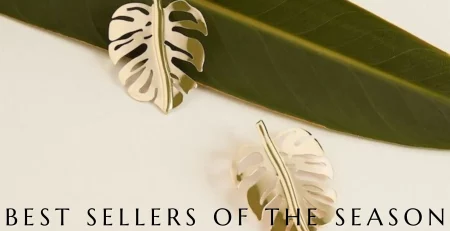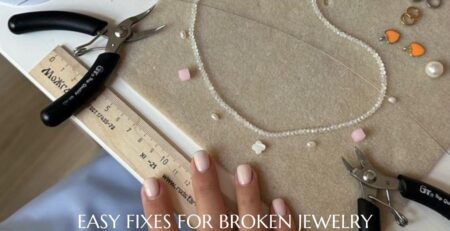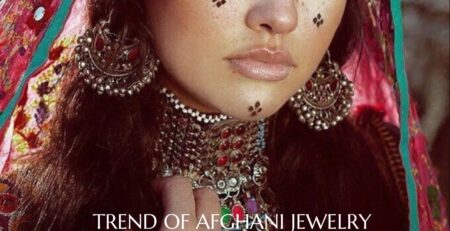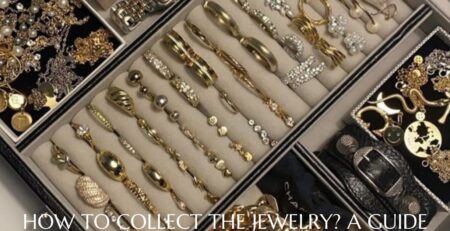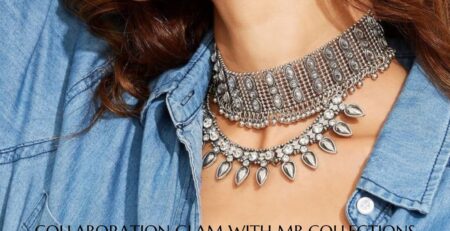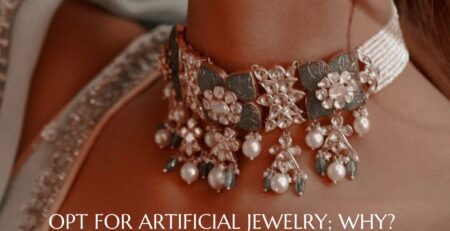IDENTIFYING THE AUTHENTIC VINTAGE JEWELRY
When it comes to authenticating vintage jewelry, M.B Collections understands the allure and value of these timeless pieces. Our appreciation for history and quality drives us to offer you the best vintage finds. To help you distinguish genuine vintage items,we’ve curated a comprehensive guide that blends practical advice with historical insights.
Understanding Vintage Jeweler:
Firstly, let’s define what qualifies as vintage. Vintage jewelry typically refers to pieces that are at least 20 to 100 years old. These items echo the fashion trends, craftsmanship, and materials of their respective eras. Vintage jewelry can be categorized by the time period they were made.
The Era Tells a Story:
Each era, such as the Art Deco, Retro, or Mid-Century Modern period, has distinct styles. For instance, the Art Deco period is known for its geometric shapes and bold colors, while the Retro era often featured large, gold, chunky bracelets and flamboyant cocktail rings.
- Art Deco (1920s-1930s): Characterized by geometric designs, bold colors, and the use of materials like platinum and diamonds.
- Retro (1930s-1950s): Known for its larger-than-life, glamorous designs, often in gold and featuring semi-precious stones.
- Mid-Century Modern (1950s-1960s): Reflects the era’s modernist movements with sleek, sculptural designs.
Tips for Identifying Authentic Vintage Jewelry:
Hallmarks and Maker’s Marks:
- Look for stamps indicating metal purity (e.g., “14K”, “925”) and designer signatures or logos.
- Familiarizes yourself with the hallmarks of renowned vintage jewelry makers.
Materials Used:
- Assess the materials: true vintage pieces often feature natural pearls, real gemstones, and high-quality metals. Synthetic materials are a modern invention, so their presence could indicate a reproduction.
Craftsmanship Quality:
Handcrafted elements, unique designs, and the overall finish can signify age and authenticity. Unevenness in handmade items is a sign of authenticity as modern jewelry is often mass-produced to perfection.
Wear and Patina:
Genuine vintage pieces show signs of wear, especially in areas of frequent contact. A patina, a layer of tarnish that occurs naturally on metal with age, is a good indicator of an old piece.
Fastenings and Closures:
Older pieces might have a barrel clasp, a fishhook, or a box clasp, rather than the lobster clasps commonly used today. Screw-back earrings were prevalent before the invention of clip-ons and pierced ear styles.
Style and Motifs:
Research the design motifs specific to various historical periods. For example, the Art Deco period often embraced symmetrical, streamlined forms, whereas the Victorian era favored nature-inspired designs.
Provenance:
Provenance, or the item’s history of ownership, can often authenticate a piece. An accompanying story can add to the credibility of the item’s vintage status.
Caring for Vintage Jewlery:
Once you’ve identified and acquired vintage pieces, proper care is crucial:
- Storage: Keep each piece separately to prevent scratching or tangling.
- Cleaning: Use gentle cleaners and avoid harsh chemicals.
- Handling: Be mindful when wearing and handling your vintage treasures to preserve their condition.
The Timeless Appeal of Vintage:
Vintage jewelry is not just about adornment but is also a piece of history. It reflects the craftsmanship and beauty of bygone eras, and by wearing vintage, you carry forward the story of the past.
Conclusion:
At M.B Collections, we believe that vintage jewelry is not just an accessory but a piece of history. By following the tips we’ve provided, you can confidently navigate the fascinating world of vintage jewelry. Remember, each piece tells a story, and with a keen eye and a bit of knowledge, you can ensure that the stories you carry are authentic.


